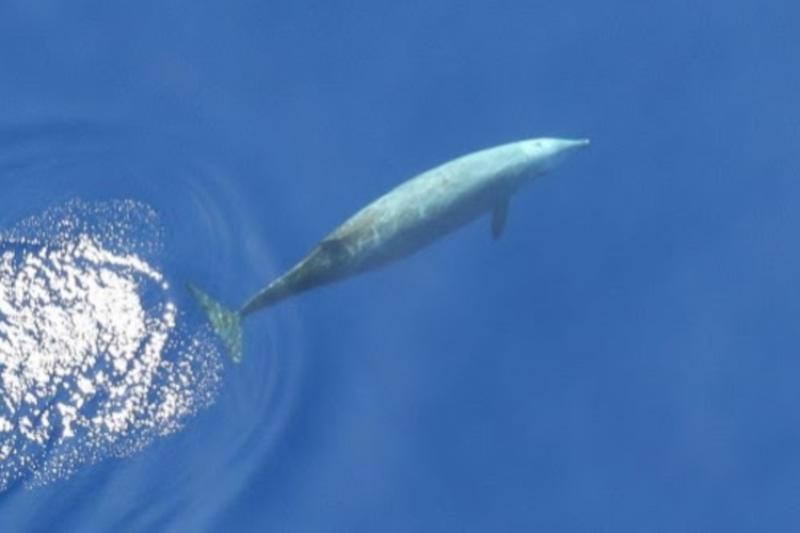Scientists from NOAA’s Southeast Fisheries Science Center recently completed the first leg of a mission to survey marine mammals and other protected species in waters off the southeast coast of the United States. They are locating, identifying, and counting marine mammals from both the NOAA Ship Gordon Gunter and a NOAA Twin Otter aircraft.
The data they collect will be used to assess the abundance, distribution, ecology, and behavior of marine mammals, sea turtles, and seabirds throughout the U.S. Atlantic. These data are also critical for updating the Atlantic stock assessment reports required by the Marine Mammal Protection Act (MMPA).
Usually, we conduct these marine mammal surveys annually but were not able to collect data in 2020 because of the COVID-19 pandemic. The beginning of this trip has also had some challenges—two tropical storms have made for rough seas and grounded flights.
In spite of these challenges, the ship-board team has logged 325 marine mammal sightings—a single leg record for the team—since departing Newport, Rhode Island on June 12 and arriving in Charleston, South Carolina on July 3. Notable sightings included two large Clymene dolphin (Stenella clymene) sightings, a Gervais’ beaked whale (Mesoplodon europaeus) sighting, and multiple false killer whale (Pseudorca crassidens) sightings. Scientists were also towing a hydrophone array to collect passive acoustic data—underwater sounds from whales and dolphins. They collected 76 recordings, 16 of which were from sperm whale groups.
Even though this research trip is focused on marine mammals, another team of scientists were watching the skies instead. The team of seabird observers counted 3,074 individual birds of 22 species. The top three sightings were Great Shearwater (Ardenna gravis), Wilson's Storm-Petrel (Oceanites oceanicus), and Leach's Storm-Petrel (Hydrobates leucorhous).
The team surveying from the plane began their work on June 15 working out of Ft. Lauderdale, Florida. They will make their way north along the U.S. east coast, flying out of St. Augustine, Florida, Charleston, South Carolina, Newport News, Virginia, Atlantic City, New Jersey, and Hyannis, Massachusetts. They will fly as far north as the waters off of Nova Scotia and conclude the survey on September 15. While the aerial surveys are focused on marine mammals and sea turtles in coastal and continental shelf waters, they do sometimes record large fish sightings as well.
This survey is part of the Atlantic Marine Assessment Program for Protected Species (AMAPPS), a multi-agency research program with partners from NOAA, Bureau of Ocean Energy Management, U.S. Fish and Wildlife Service, and U.S. Navy. A similar survey, also part of AMAPPS, is being led by NOAA’s Northeast Fisheries Science Center in waters off the Northeast United States. Both of these surveys work toward the combined goal of surveying all of the U.S. Atlantic waters from the Florida Keys to the waters off of Maine and southern Nova Scotia.
Collecting data on marine mammal, sea turtle, and seabird abundance and distribution regularly over time is crucial to understanding population status and trends in relation to ecological and environmental change and human-caused stressors. Surveys like this one are an important part of the work researchers at the science center do—and we’re happy to be doing them again this year.








